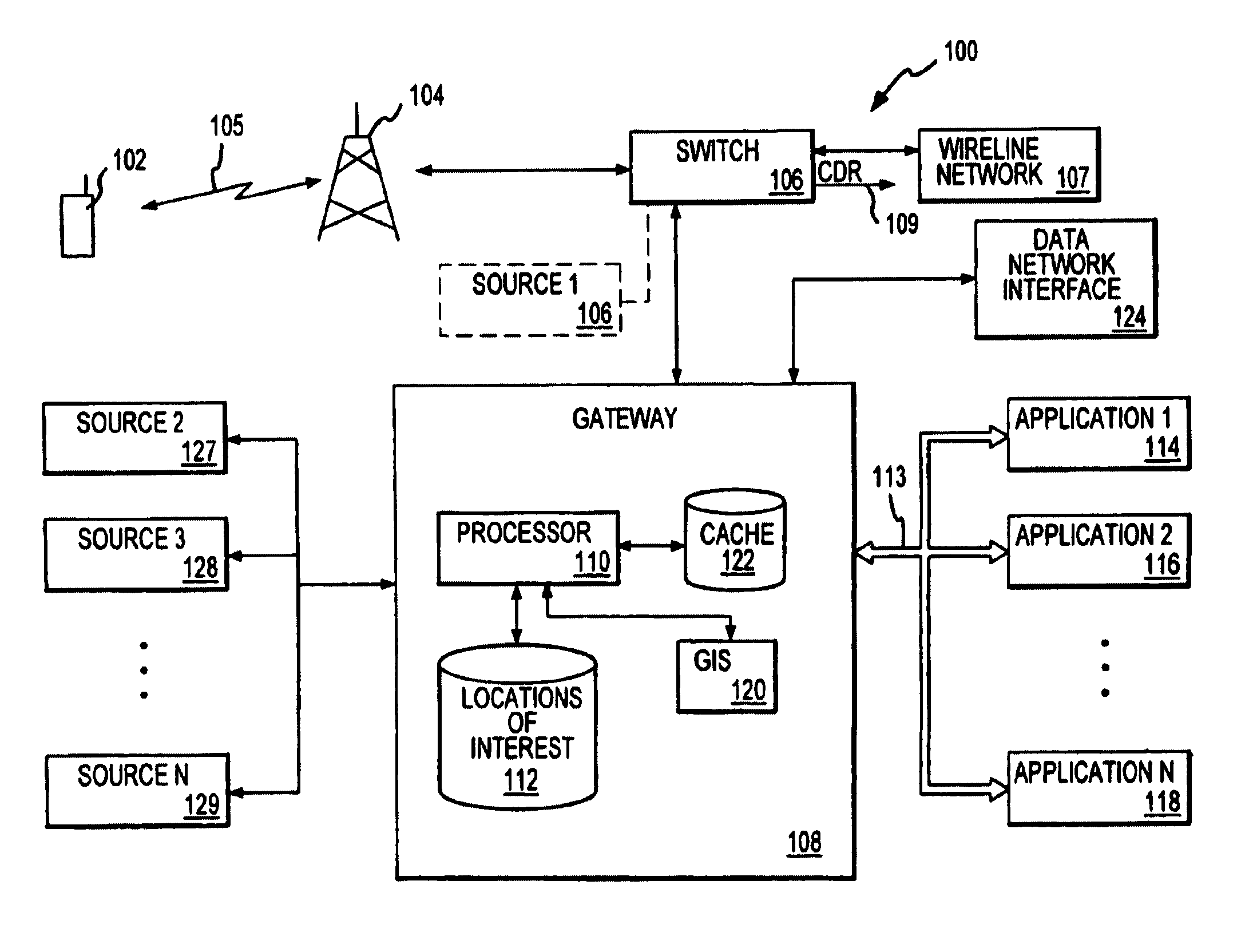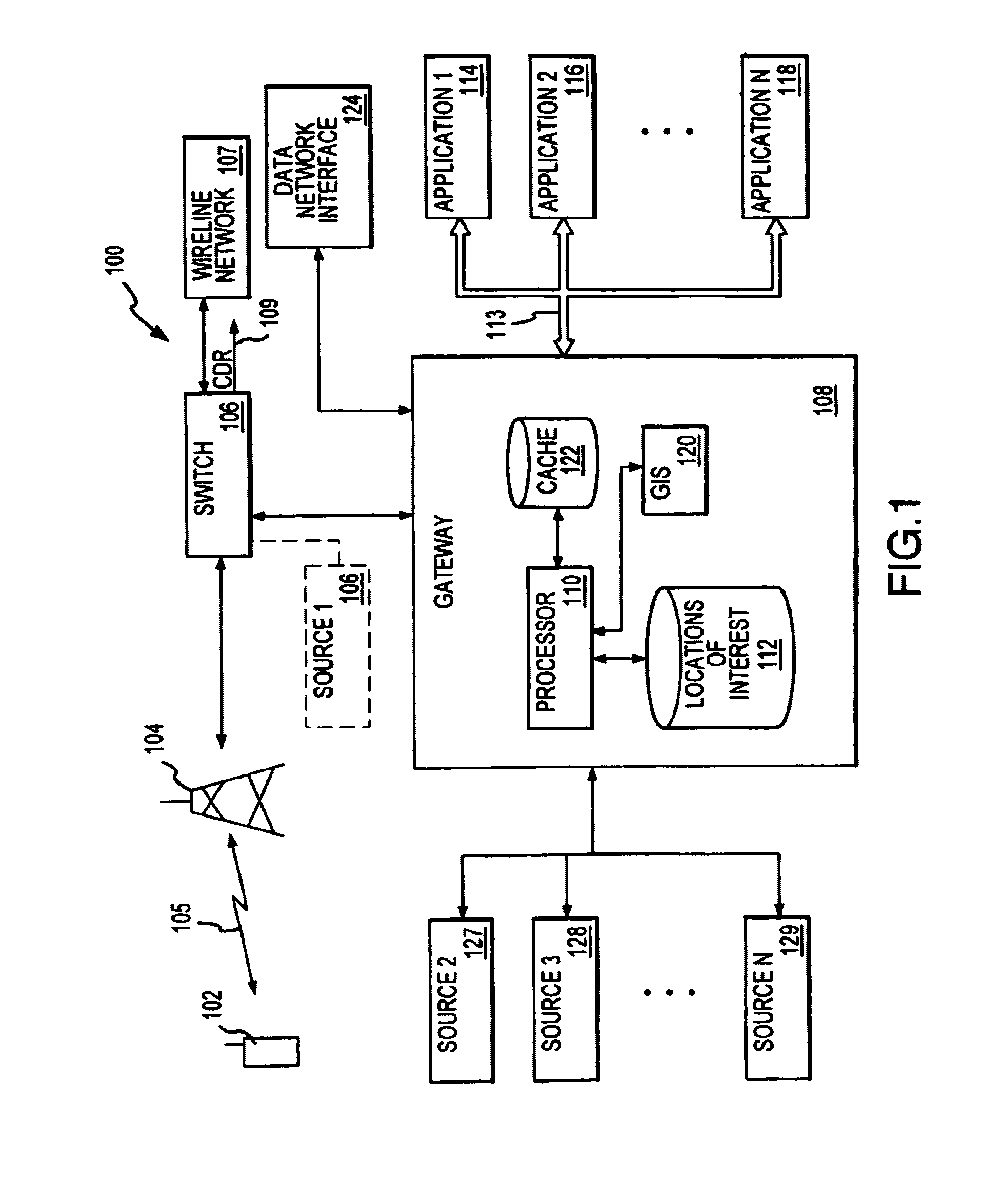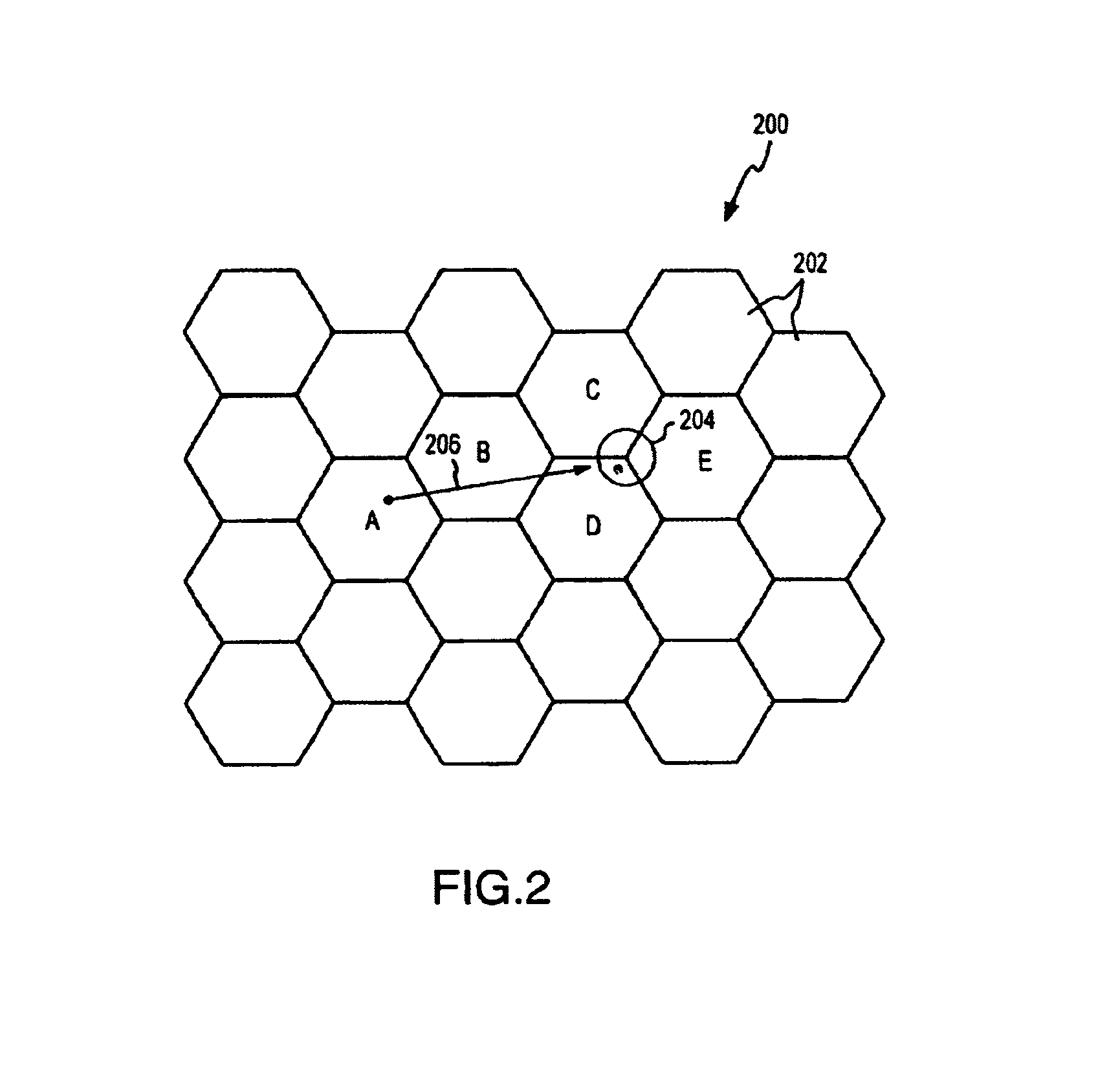[0007]More recently, some developers such as SignalSoft Corporation of Boulder, Colo., have begun developing systems that can utilize different location sources, alone or in combination. Such systems may be implemented in connection with a gateway between multiple sources of location information and one or more location-based service applications. Alternatively, such functionality may be implemented in connection with an SMLC, PDE, by particular applications or in connection with other network elements. While many service providers have recognized advantages of such systems, such attention has generally focused on simplification of application development, shortened development cycles / improved
time to market, improved ability to service a greater number of subscribers independent of
handset capabilities, increased geographic coverage areas for location-based service applications, reduced compatibility concerns relating to varying network and infrastructure environments, and potentially increased accuracy of
location determination.
[0008]The present invention is based in part on the recognition that the ability to access multiple sources of location information also enables intelligent usage of certain sources in concert for enhanced efficiency. This may be achieved in connection with a location
gateway system or in any other multiple source environment.
[0009]Invoking different location sources often entails consumption of different resources. Such resources may be
system resources, e.g.,
processing resources, messaging traffic, bandwidth or other finite system resources, or may involve pecuniary resources, e.g., in the event that a location
source system provides charges for access to location information based on usage. With regard to system resources, it will be appreciated that different sources have different requirements. For example, invoking a network-based PDE may require substantial messaging involving multiple equipment sites coupled with substantial processing. Invoking a GPS or network-
assisted GPS system may also require significant messaging and processing as well as use of limited
air interface bandwidth. By contrast, accessing internal network information may entail minimal additional burden to network resources, as such information may already reside in the network and be available at a gateway or other relevant service platform.
[0011]The present invention further involves a recognition that, for many applications of interest, it may be desirable to sequentially use one source of location information and then another, based, for example, on the expected resource requirements or time lags associated with those sources. For example, in the case of a binary zone matching application such as location-based billing, a
low resource / fast
response time source, such as a network source that provides
Cell ID information, may first be accessed to obtain low accuracy location information. Although such information may have a lower accuracy, such accuracy may still be sufficient to determine, for example, that a subscriber is well outside his home zone. The need to access a higher resource and / or slower
response time source can thus be avoided until the
Cell ID information indicates that higher accuracy information is required, e.g., because the coverage area of the identified
cell overlaps the home zone.
[0012]In other cases, a higher accuracy or slower
response time source may be accessed first. For example, because of a favorable business relationship with a given location provider, it may be advantageous to use a relatively accurate source, such as a TDOA source, for periodic monitoring of mobile unit location. However, when a location relationship of interest is indicated, a different source may be accessed, e.g., because the service application specifies that source or because information from that source can be most easily handled by a gateway or the service application.
[0013]The location information from the first source may also be used to determine not only if, but when the
second source is invoked. Thus, in the example above regarding a location-based billing application,
Cell ID information is used to determine whether more accurate information is necessary, e.g., in connection with a call placed to or from a subscriber. In a number of applications, including alternative implementations of location-based billing and applications for monitoring the movements of children, automobiles or other assets, it may be desired to provide notice when a boundary of interest is crossed. In such cases, a first source may be used for monitoring on a periodic or other repeating basis and a
second source invoked when necessary, e.g., as a boundary is approached. It will be appreciated that the associated trigger event may be proximity-based or based on some other location relationship rather than boundary crossings. In any event, it will be appreciated that the present invention allows for intelligent use of multiple sources, including for enhanced efficiency.
 Login to View More
Login to View More  Login to View More
Login to View More 


